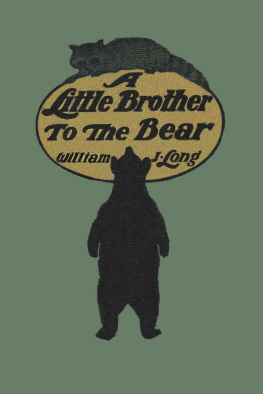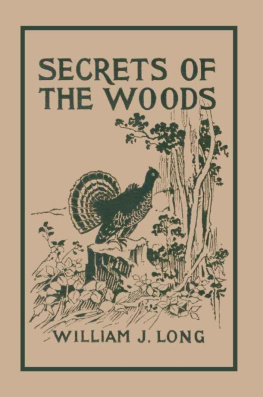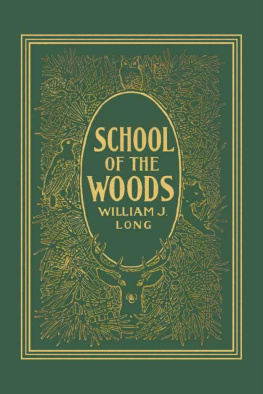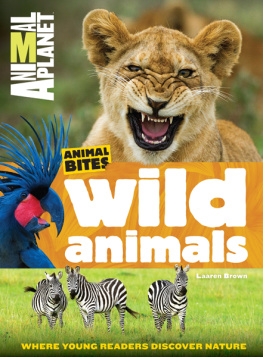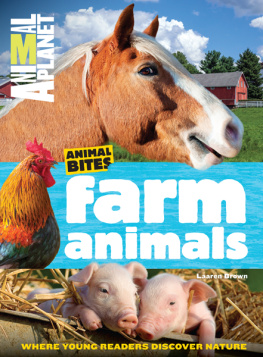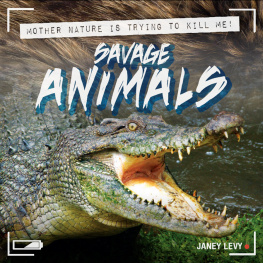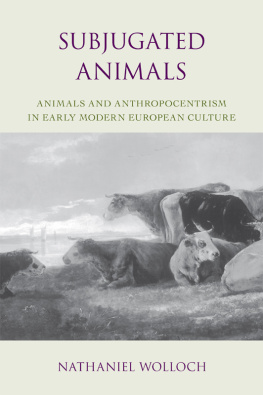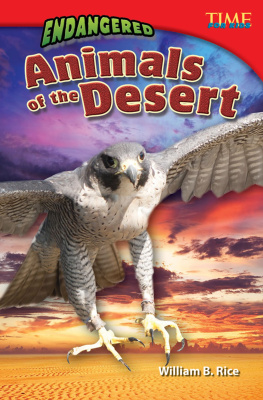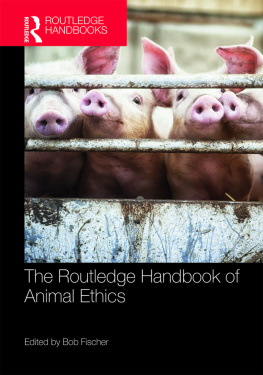A Little Brother to the Bear
by
William J. Long
Yesterday's Classics
Chapel Hill, North Carolina
Cover and Arrangement 2010 Yesterday's Classics, LLC
All rights reserved. No part of this book may be reproduced or retransmitted in any form or by any means without the written permission of the publisher.
This edition, first published in 2010 by Yesterday's Classics, an imprint of Yesterday's Classics, LLC, is an unabridged republication of the work originally published by Ginn and Company in 1903. This title is available in a print edition (ISBN 978-1-59915-189-2).
Yesterday's Classics, LLC
PO Box 3418
Chapel Hill, NC 27515
Yesterday's Classics
Yesterday's Classics republishes classic books for children from the golden age of children's literature, the era from 1880 to 1920. Many of our titles are offered in high-quality paperback editions, with text cast in modern easy-to-read type for today's readers. The illustrations from the original volumes are included except in those few cases where the quality of the original images is too low to make their reproduction feasible. Unless specified otherwise, color illustrations in the original volumes are rendered in black and white in our print editions.
Preface
The object of this little book, so far as it has been an object beyond that of sharing a simple pleasure of mine with others, will be found in the first chapter, entitled "The Point of View"; and the title will be explained in the chapter on "A Little Brother to the Bear" that follows.
All the sketches here are reproduced from my own note-books largely, or from my own memory and the observations over a period of some thirty years,from the time when I first began to prowl about the home woods with a child's wonder and delight to my last hard winter trip into the Canadian wilderness. Some of the chapters, like those of the Woodcock and the Coon, represent the characteristics of scores of animals and birds of the same species; others, like those of the Bear and the Eider-Duck in "Animal Surgery," represent the acute intelligence of certain individual animals that nature seems to have lifted enormously above the level of their fellows; and in a single casethat of the ToadI have for the storie's sake, gathered into one creature the habits of four or five of these humble little helpers of ours that I have watched at different times and in different places.
The queer names herein used for beasts and birds are those given by the Milicete Indians, and represent usually some sound or suggestion of the creatures themselves. Except where it is plainly stated otherwise, all the incidents and observations have passed under my own eyes and have been confirmed late by other observers. In the records, while holding closely to the facts, I have simply tried to make all these animals as interesting to the reader as they were to me when I discovered them.
WM. J. LONG.
Stamford, September, 1903
Contents
The Point of View
A N old Indian, whom I know well, told me that he once caught a bear in his deadfall. That same day the bear's mate came and tried to lift away the heavily weighted log that had fallen on her back and crushed her. Failing in this he broke his way into the inclosure; and when the Indian came, drawn in on silent inquisitive feet by a curious low sound in the air, the bear was sitting beside his dead mate, holding her head in his arms, rocking it to and fro, moaning.
Two things must be done by the modern nature writer who would first understand the animal world and then share his discovery with others. He must collect his facts, at first hand if possible, and then he must interpret the facts as they appeal to his own head and heart in the light of all the circumstances that surround them. The child will be content with his animal story, but the man will surely ask the why and the how of every fact of animal life that particularly appeals to him. For every fact is also a revelation, and is chiefly interesting, not for itself, but for the law or the life which lies behind it and which it in some way expresses. An apple falling to the ground was a common enough fact,so common that it had no interest until some one thought about it and found the great law that grips alike the falling apple and the falling star.
It is so in the animal world. The common facts of color, size, and habit were seen for centuries, but had little meaning or interest until some one thought about them and gave us the law of species. For most birds and animals these common facts and their meaning are now well known, and it is a wearisome and thankless task to go over them again. The origin of species and the law of gravitation are now put in the same comfortable category with the steam engine and the telegraph wire and other things that we think we understand. Meanwhile the air has unseen currents that are ready to bear our messages, and the sun wastes enough energy on our unresponsive planet daily to make all our fires unnecessary, if we but understood. Meanwhile, in the animal world, an immense array of new facts are hidden away, or are slowly coming to light as nature students follow the wild things in their native haunts and find how widely they differ one from another of the same kind, and how far they transcend the printed lists of habits that are supposed to belong to them.

We were too long content with the ugly telegraph pole and wire as the limit of perfection in communication; and we have been too well satisfied with the assumption that animals are governed by some queer, unknown thing called instinct, and that all are alike that belong to the same class. That is true only outwardly. It is enough to give the animal a specific name, but no more; and an animal's name or species is not the chief thing about him. You are not through with Indians when you have determined their race. That is sufficient for ethnology; to write in a book: possibly also the Calvinistic theologian was one time satisfied therewith; but the Indian's life still remains, more important than his race, and only after two centuries of neglect, or persecution, or injustice, are we awaking to the fact that his life is one of extraordinary human interest. His medicine lore and his thoughts of God lie deeper than the curve of his cranium; his legends and his rude music must be interpreted, as well as the color of his skin, and we are but just beginning to see the meaning of these larger things.
All this is only an analogy and proves nothing. However, it may suggest, if one thinks about it, that possibly we have made a slightly similar mistake about the animals; that we are not quite through with them when we have cried instinct and named their species, nor altogether justified in killing them industriously off the face of the earthas we once did with the poor Beothuk Indians for the skins that they wore. Beneath their fur and feathers is their life; and a few observers are learning that their life, also, with its faint suggestion of our own primeval childhood, is one of intense human interest. Some of them plan and calculate; and mathematics, however elementary, is hardly a matter of instinct. Some of them build dams and canals; some have definite social regulations; some rescue comrades; some bind their own wounds, and even set a broken leg, as will be seen in one of the following chapters. All higher orders communicate more or less with each other, and train their young, and modify their habits to meet changing conditions. These things, and many more quite as wonderful, are also facts. We are still waiting for the naturalist who will tell us truly what they mean.

